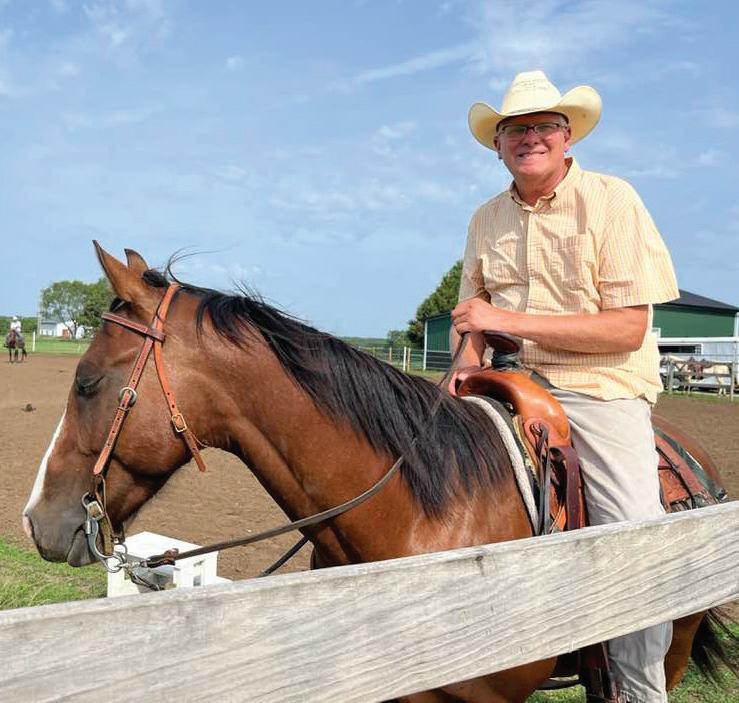
2 minute read
Local Cattle Ventures provide Fulfillment after Retirement and Second
Joel Erickson, rancher Moving to a house with some land south of De Soto in December of 2013 prompted Joel’s cattle venture, which began with four cows and four calves. Since then, he has grown his operation into a full scale cow/calf operation see box below.
Both his and his wife’s parents grew up around farms. “Melissa and I were both city people,” explained Joel, “but I had always thought in the back of my mind of ‘going back to nature.’” After a career in the mortgage lending business and developing two retirement communities, Joel’s retirement venture came about after getting the cow bug! Being a high-energy guy, he preferred to be outside. “One of the things that drives me is the desire to pursue my dreams today. I don’t want to put them off until tomorrow,” Joel said with passion.
“I always have a mentor,” Joel stated. Longtime friend, Jim Campbell, who runs a similar operation, has provided valuable insight and experience. “I talk to him several times a week,” shared Joel.
Seven years ago he expanded his operation and bought 160 acres south of Lawrence, where he currently has sixty cows. The first semi load of 29 cows and calves were dropped off at the property in 2016. Seeing the cows bound off the semi was a dream come true. Joel shared this moment with his parents, and will never forget his mother’s tears of joy. The property holds so many beautiful memories. “My mom and dad just loved being there,” shared Joel. I am blessed to have a neighbor friend help with the daily operations and winter feeding. At their De Soto home, they currently have eleven heifers, a bull and a few calves. A heifer is a female cow that has not yet calved. For these, Joel likes to keep the soon-to-be mamas nearby and under close watch. The next year, he moves them to the Lawrence farm as the birthing risks become lower. His cow herd is colorful. Most cattle operations are predominantly black cows, but he prefers some color in his cows. “I breed my cows to low birth weight Charolais bulls. By crossing with these bulls, the calves’ colors are white, gray or yellow, and they have better growth,” Joel informed, “instead of breeding angus to angus, which is more typical.” He keeps some of his best heifers each year. Horses were added to the cattle venture in 2021. The quarter horses work the cattle, as they sort and gather the herd. “Much quieter than ATV’s, and just beautiful!” Joel exclaims, a city-boy truly transformed and enjoying the good rural life!
–interview with Joel Erickson, by Rose M. Burgweger, publisher/editor
Three main stages of raising cattle:
• Cow/calf Birthing and then growing the calf to around 500 pounds
• Backgrounding Growing calves to around 800 pounds

• Feedlot operations Finishing/fattening for market to around 1,000 pounds “The fattened beef is just better”
Feeding Cattle Fescue or Bromegrass/Hay Bales
Equipment unrolls hay bales, lowering it to the ground and spreads as it unrolls. This controls where cattle feed. “Everybody goes to the buffet at the same time” and are able to eat together. This method optimizes the land, providing good land stewardship.










